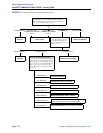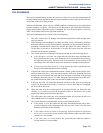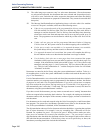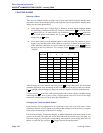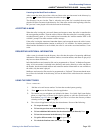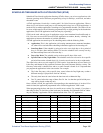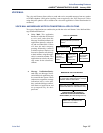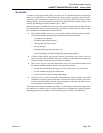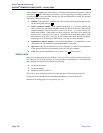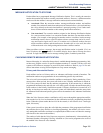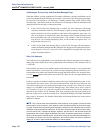
Page 286
Voice Processing Features
AXXESS
®
ADMINISTRATOR’S GUIDE – January 2004
SMDR Information Storage and Retrieval
SMDR INFORMATION STORAGE AND RETRIEVAL
The Voice Processor PC can be used to capture Station Message Detail Recording (SMDR)
information. The SMDR information is stored in a file on the Voice Processor PC’s hard disk
for later retrieval.
Every time a call is completed, the SMDR feature records the call, formats it according to
SMDR programming (see page 261), and sends the record to the SMDR output device, if
enabled. The formatted record is also sent to the Voice Processor if SMDR buffering is
enabled.
The Voice Processor PC adds each call record to the SMDR buffer file as it is received. The
amount of disk space allocated for SMDR storage is determined in Database Programming.
The default value is zero megabytes of memory. If the call records use disk space exceeding
80% of the allotment, the system generates an alarm and displays it at the primary attendant
station and all telephone system administrator stations. Another alarm message is generated if
the allotted space is 100% filled. If the maximum buffer capacity is exceeded, the oldest call
record(s) are discarded as new ones arrive.
NOTE: Since each SMDR call record takes up approximately 81 bytes on the Voice Processor
PC, nearly 13,000 calls can be stored in each megabyte of hard disk space.
The SMDR records, which are stored in ASCII/binary format, are buffered until they are
cleared by the programmer. If desired, the programmer may save and/or restore SMDR data
(along with the system database) to floppy disks using the Voice Processing Save and Restore
feature.
If desired, the SMDR records can be retrieved and processed using Inter-Tel’s Inside Track
®
, a
separate call accounting software package, to create customized reports.
In a network setting, the Voice Processor will buffer SMDR records that are sent from other
nodes in the network.



